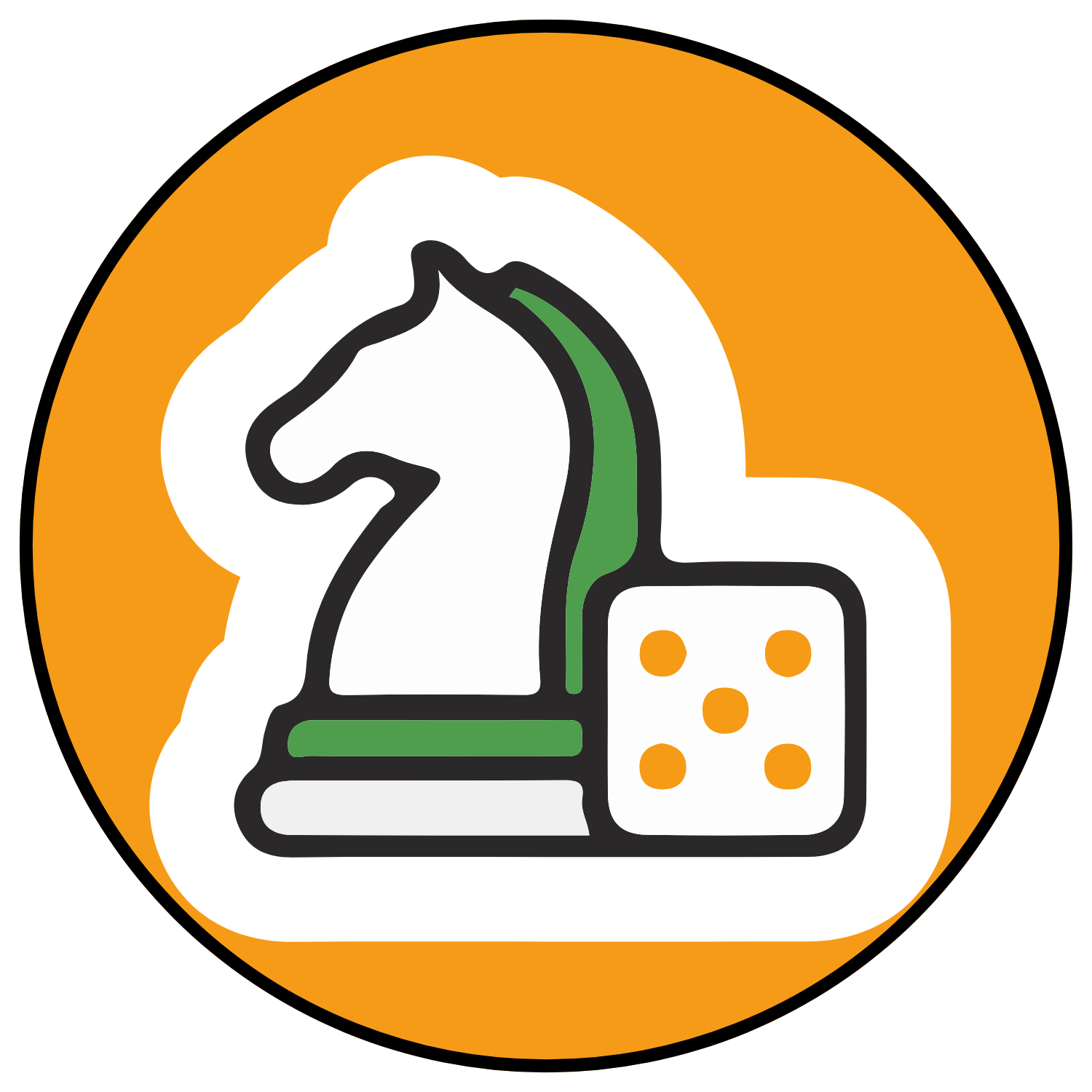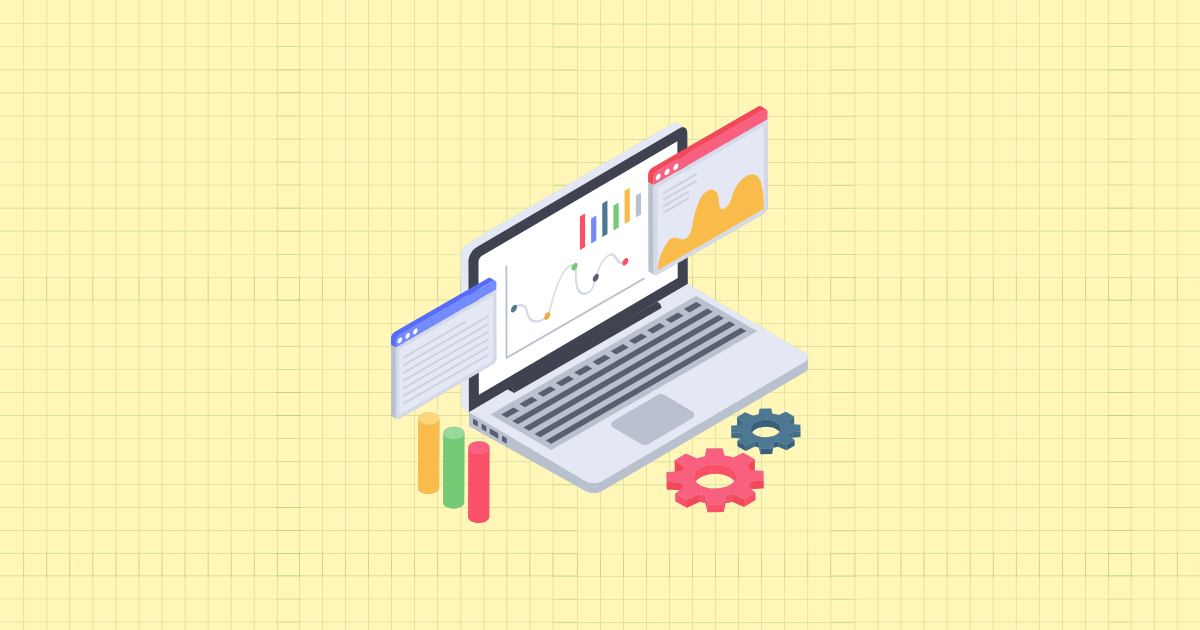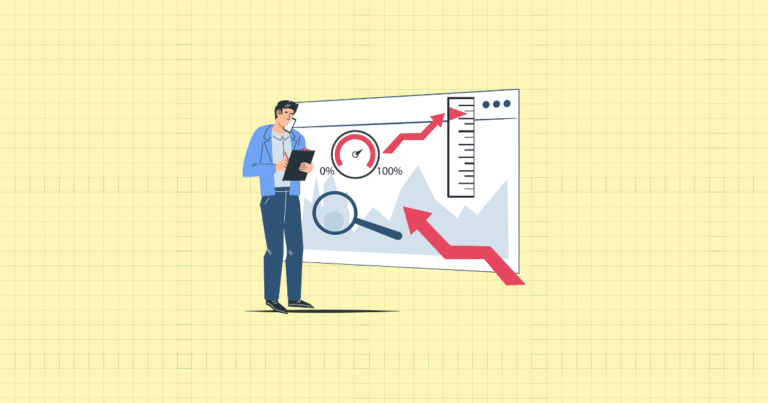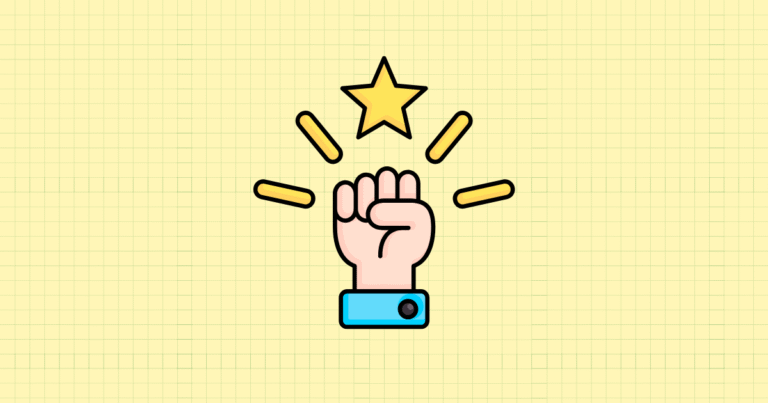Picture this: a customer finds your perfect product, adds it to their cart, and then… vanishes. Gone. Just like that, along with their potential purchase.
This isn’t just an occasional hiccup—it’s happening to roughly 70% of your website visitors right now. That’s billions of dollars walking away from online stores every single year, and your Shopify store isn’t immune to this costly reality.
But here’s what most store owners don’t realize: you can actually calculate exactly how much money you’re losing to cart abandonment. More importantly, once you understand the true financial impact, you can take targeted action to recover those lost sales and boost your revenue significantly.
In this guide, you’ll discover how to calculate your store’s abandonment rate, pinpoint your exact revenue loss, and implement proven strategies to turn those abandoned carts back into paying customers. Whether you’re just starting out or running an established store, the insights ahead will help you recover revenue you didn’t even know you were losing.
Why Cart Abandonment Matters for Every Shopify Store Owner
Cart abandonment isn’t just a minor inconvenience. It’s a massive revenue leak that affects every type of ecommerce business.
Industry data shows that the average cart abandonment rate hovers around 70% across all ecommerce platforms. But mobile devices? They’re even worse, with abandonment rates soaring past 85%. Think about that for a moment—more than 8 out of every 10 mobile shoppers who add items to their cart will leave without buying.
For Shopify stores specifically, this translates directly into lost potential revenue, reduced return on ad spend (ROAS), and a lower growth ceiling. Every abandoned cart represents a customer who was interested enough to start the buying process but encountered something that made them change their mind.
The Impact Across Different Store Types
Cart abandonment doesn’t discriminate based on your store’s size or experience level. However, the impact varies significantly depending on where you are in your ecommerce journey.
Starter and Beginner Stores face a particularly challenging situation. When you’re just launching or building initial traction, every sale counts. Missing out on 70% of your potential revenue isn’t just disappointing—it can be the difference between growth and stagnation. Your margin for error is slim, making cart abandonment recovery essential for survival.
Intermediate and Advanced Stores deal with a different challenge entirely. Large traffic volumes mean that even small improvements in cart abandonment rates can translate into significant revenue increases. A 5% improvement in conversion for a store processing 10,000 visitors per month creates much more impact than the same improvement for a store with 1,000 visitors.
The key insight? Regardless of your store’s current stage, addressing cart abandonment should be a top priority in your optimization strategy.
Understanding Cart Abandonment: Definitions and Root Causes
Before diving into calculations and solutions, let’s establish exactly what we’re dealing with.
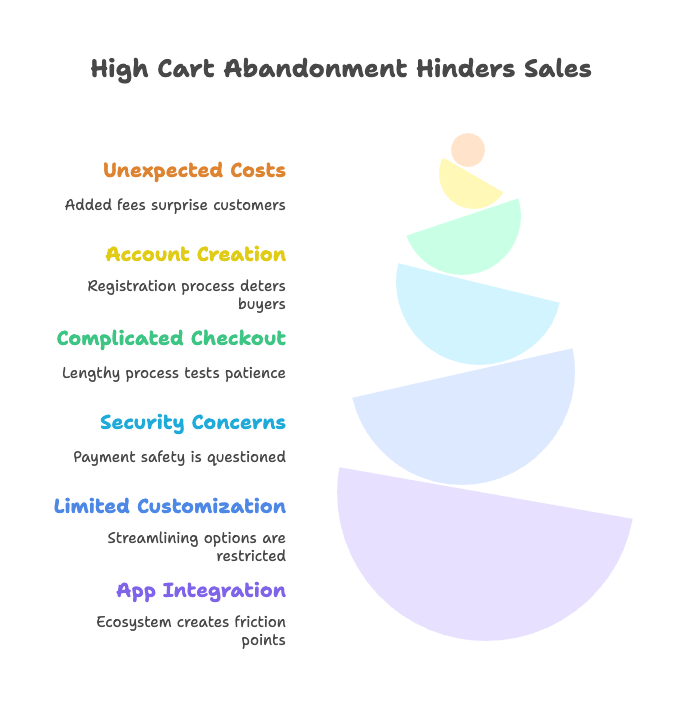
What Counts as Cart Abandonment on Shopify?
Cart abandonment occurs when a customer adds one or more products to their shopping cart but leaves your store without completing the purchase. Simple enough, right?
But here’s where it gets interesting. Shopify tracks this through what they call “checkout abandonment,” which specifically measures customers who begin the checkout process but don’t complete it. This gives you a more precise picture than just looking at cart additions, because it focuses on customers who showed serious buying intent.
The Most Common Culprits Behind Abandoned Carts
Understanding why customers abandon their carts is crucial for developing effective recovery strategies. Research consistently shows several key factors driving this behavior:
Unexpected costs top the list. Nothing kills a sale faster than surprise shipping fees, taxes, or additional charges that weren’t clearly communicated upfront. When customers see their total jump at checkout, many will abandon rather than pay more than expected.
Mandatory account creation creates another significant barrier. Many shoppers want to complete their purchase quickly without creating yet another online account. Forcing registration can push hesitant buyers over the edge.
Lengthy or complicated checkout processes test customers’ patience. Every additional step, form field, or confusing element increases the likelihood that someone will give up and shop elsewhere.
Payment and security concerns remain prevalent, especially for newer or less-established stores. Customers need to feel confident that their payment information is secure and that they’re dealing with a legitimate business.
Other factors include slow loading times, unclear return policies, lack of preferred payment methods, and simple “browsing behavior”—customers who were never truly ready to buy but were just exploring options.
Shopify-Specific Challenges
Shopify stores face some unique considerations when it comes to cart abandonment.
For newer store owners, checkout customization options can be limited compared to enterprise platforms. This means you might not be able to streamline the checkout process as much as you’d like without upgrading your plan or using third-party apps.
The extensive Shopify app ecosystem offers powerful solutions, but it also creates integration challenges. Adding multiple apps can slow down your site or create conflicts that introduce new friction points in the customer journey.
Understanding these platform-specific factors helps you make informed decisions about which solutions will work best for your particular setup and budget.
Calculating Your Store’s Cart Abandonment Rate and Revenue Loss
Now comes the crucial part: quantifying exactly how much cart abandonment is costing your business. This isn’t just academic—having concrete numbers helps you prioritize improvements and measure the impact of your optimization efforts.
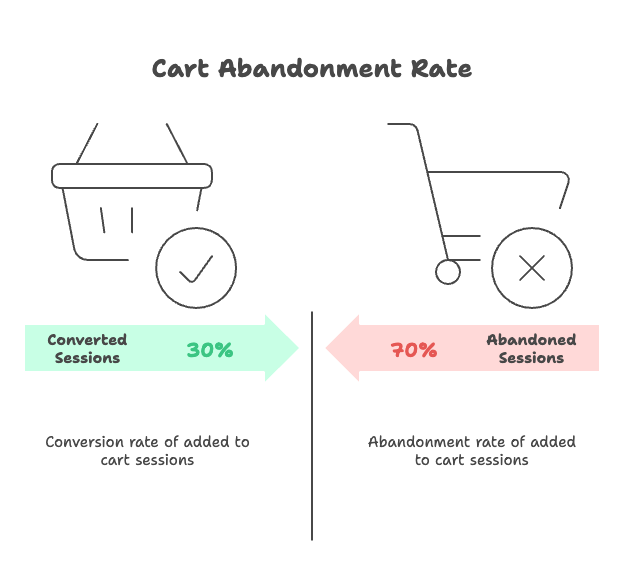
Finding Your Cart Abandonment Rate in Shopify
Shopify makes it relatively straightforward to find your abandonment data, but you need to know where to look.
Start by navigating to your Shopify admin dashboard, then go to Analytics > Dashboard. Select a meaningful date range—I recommend looking at the last 90 days to get a representative sample that accounts for seasonal variations.
Look for two key metrics: “Added to Cart Sessions” and “Sessions Converted.” These numbers tell you how many people added items to their cart versus how many actually completed a purchase.
The formula is straightforward:
Abandoned Cart Rate = [(Added to Cart Sessions – Sessions Converted) / Added to Cart Sessions] × 100
For example, if you had 1,000 sessions where people added items to cart, and 300 of those sessions resulted in completed purchases, your abandonment rate would be:
[(1,000 – 300) / 1,000] × 100 = 70%
This means 70% of customers who showed buying intent by adding items to cart ultimately left without purchasing.
Calculating Your Actual Revenue Loss
Knowing your abandonment rate is useful, but calculating the actual dollar amount you’re losing makes the problem tangible and actionable.
You’ll need two pieces of data: the number of abandoned carts and your Average Order Value (AOV). You can find your AOV in the same Shopify Analytics dashboard.
The basic formula is:
Lost Revenue = Number of Abandoned Carts × Average Order Value
Let’s walk through a realistic example:
- Monthly visitors who add to cart: 2,000
- Monthly completed purchases: 600
- Monthly abandoned carts: 1,400
- Average Order Value: $85
Monthly lost revenue = 1,400 × $85 = $119,000
Annually, that’s over $1.4 million in potential revenue walking away from this hypothetical store.
Now, this calculation assumes that every abandoned cart would have converted with perfect optimization, which isn’t realistic. But even if you could recover just 15-20% of these abandoned carts, you’d be looking at substantial additional revenue—$17,850 to $23,800 monthly in our example.
The impact varies significantly based on your store type. High-volume stores with lower AOV might see smaller per-cart losses but massive cumulative impact. Luxury stores with higher AOV face larger per-cart losses that can quickly add up to serious money.
Shopify Tools and Analytics for Understanding Your Losses
Understanding your abandonment rate is just the beginning. To create effective recovery strategies, you need deeper insights into customer behavior and where exactly people are dropping off in your sales funnel.
Leveraging Shopify’s Built-In Analytics
Shopify provides several built-in tools for tracking abandoned carts that many store owners underutilize.
In your admin dashboard, navigate to Orders > Abandoned Checkouts to see a list of customers who started but didn’t complete their purchase. This report shows you exactly what items were left behind, when the abandonment occurred, and the total value of each abandoned cart.
You can export this data to analyze patterns. Are certain products abandoned more frequently? Do abandonments spike at particular times of day or days of the week? Are there seasonal trends you can identify?
The abandoned checkout report also provides valuable customer information, including email addresses (when available), which becomes crucial for recovery campaigns.
Advanced Analytics with Specialized Apps
While Shopify’s native analytics provide a solid foundation, specialized apps can offer much deeper insights into customer behavior and abandonment patterns.
Advanced analytics tools can provide funnel reports that show you exactly where customers drop off in the buying process. Maybe people are abandoning at the shipping information stage, or perhaps they’re getting stuck on payment options. Identifying these specific friction points allows you to address the root causes rather than just treating symptoms.
These tools can also segment abandoners by behavior type. Some customers abandon due to hesitation about the purchase decision. Others encounter technical issues. Still others were never serious buyers in the first place. Understanding these different segments allows you to craft targeted recovery strategies for each group.
Mobile versus desktop abandonment tracking reveals crucial device-specific insights. If your mobile abandonment rate is significantly higher than desktop, you know where to focus your optimization efforts.
Real-time tracking capabilities let you identify abandonment patterns as they happen, enabling immediate response with personalized offers or assistance.
Proven Strategies for Reducing Cart Abandonment
Armed with data about your abandonment patterns, you can now implement targeted strategies to recover lost sales. The most effective approach combines checkout optimization with proactive recovery campaigns.
Optimizing the Checkout Experience
Prevention is often more effective than recovery. Reducing friction in your checkout process addresses abandonment at its source.
Enable Shop Pay if you haven’t already. This one-click payment solution dramatically reduces checkout friction by allowing customers to complete purchases without re-entering payment and shipping information. Stores using Shop Pay typically see meaningful improvements in conversion rates.
Offer guest checkout options to eliminate the account creation barrier. While having customer accounts provides long-term benefits, forcing registration during the purchase process often drives people away. You can always encourage account creation after the purchase is complete.
Display shipping costs and delivery times clearly before checkout begins. Transparency about additional costs eliminates unpleasant surprises that cause abandonment. Consider offering free shipping thresholds to encourage larger orders while covering shipping costs.
Include trust signals throughout the checkout process. Security badges, money-back guarantees, and clear return policies help nervous customers feel confident about completing their purchase.
Automated Cart Recovery Campaigns
Even with optimized checkout experiences, some abandonment is inevitable. Automated recovery campaigns help bring customers back to complete their purchases.
Abandoned cart emails remain one of the most effective recovery tools. The key is timing and personalization. Send your first email within a few hours of abandonment while the products are still fresh in the customer’s mind. Follow up with additional emails over the next few days, but don’t overwhelm people with too many messages.
Effective abandoned cart emails typically see open rates between 45-50% and click-through rates around 10-15%. Even a modest 5-10% conversion rate on these emails can recover significant revenue.
Exit-intent popups catch customers in the moment they’re about to leave. These can offer small discounts, highlight shipping benefits, or address common concerns. When implemented thoughtfully, exit-intent popups can recover 5-15% of otherwise lost sales.
Multi-channel recovery expands your reach beyond email. SMS messages, push notifications, and retargeting ads create multiple touchpoints to bring customers back. The key is coordinating these channels so customers receive a consistent, helpful message rather than feeling bombarded.
Personalization and Behavioral Targeting
The most sophisticated recovery strategies use customer behavior data to personalize the approach for different types of abandoners.
First-party data about customer browsing patterns, previous purchases, and engagement levels allows you to craft highly targeted recovery messages. A first-time visitor might receive a different approach than a returning customer who’s purchased before.
AI-driven offer optimization can automatically adjust discount amounts, messaging, and timing based on individual customer profiles. Rather than offering the same 10% discount to everyone, smart systems might offer smaller discounts to customers showing high purchase intent and larger incentives to more hesitant browsers.
Segmented campaigns allow you to address different reasons for abandonment. Price-sensitive customers might respond to discount offers, while customers concerned about shipping costs might prefer free shipping promotions.
Advanced Recovery Optimization and Strategic Implementation
Once you have basic recovery systems in place, the focus shifts to optimization and continuous improvement. This is where data-driven decision making becomes crucial for maximizing your recovery rates.
Measuring and Improving Recovery Effectiveness
Recovery rate is the percentage of abandoned carts that eventually convert into completed purchases through your recovery efforts. Industry benchmarks vary, but good recovery campaigns typically achieve conversion rates between 5-15%.
Track your recovery performance across different channels and customer segments. Email recovery might work better for certain product categories, while exit-intent offers might be more effective for price-sensitive customers. Understanding these patterns helps you allocate resources to the most effective tactics.
Monitor how recovery rates change over time. Are your emails becoming less effective? Are customers growing immune to certain types of offers? Regular analysis helps you spot declining performance before it significantly impacts results.
Testing and Continuous Improvement
A/B testing should be an ongoing part of your cart recovery strategy. Test different email subject lines, offer amounts, timing intervals, and message content to continuously improve performance.
Don’t overlook testing your checkout flow itself. Simple changes like button colors, form layouts, or payment option presentations can sometimes yield significant improvements in completion rates.
Segment your testing by device type and customer segments. What works for mobile users might not work for desktop visitors. New customers might respond differently than repeat buyers.
Strategic Implementation by Store Maturity
Your approach to cart abandonment should evolve with your store’s growth and sophistication.
Starter stores should focus on foundation elements: clean checkout flow, basic abandoned cart emails, and clear pricing. Don’t overcomplicate things—get the basics right first.
Beginner stores can add exit-intent popups, multi-step email sequences, and basic segmentation. This is when you start investing in dedicated apps and more sophisticated recovery tactics.
Intermediate stores benefit from advanced analytics, behavioral targeting, and multi-channel recovery campaigns. You have enough data to make informed decisions about customer segments and personalization.
Advanced stores should leverage AI-driven optimization, complex automation workflows, and sophisticated testing programs. At this level, small improvements in recovery rates can translate into substantial revenue increases.
Your Action Plan for Tackling Cart Abandonment
Cart abandonment will always be part of ecommerce, but it doesn’t have to devastate your revenue. Understanding the true cost of abandoned carts—and implementing strategic recovery systems—can transform this challenge into an opportunity for growth.
Start with measurement. Calculate your current abandonment rate and revenue loss using the formulas we’ve covered. This gives you a baseline and helps justify investments in optimization.
Focus on prevention first. Optimize your checkout process to remove unnecessary friction. Enable guest checkout, display costs clearly, and ensure your payment process feels secure and trustworthy.
Implement basic recovery systems. Set up abandoned cart emails with personalized messaging and appropriate timing. Add exit-intent popups for customers showing signs of leaving.
Continuously monitor and improve. Track your recovery rates, test different approaches, and refine your strategy based on actual performance data.
Remember that cart abandonment recovery is an ongoing process, not a one-time fix. As your store grows and evolves, your recovery strategies should become more sophisticated and targeted.
The revenue you recover from abandoned carts is some of the highest-ROI money you’ll ever earn. You’ve already paid to acquire these customers—now you’re just helping them complete the purchase they were already interested in making.
References
- Baymard Institute. “Cart Abandonment Rate Statistics 2025,” https://baymard.com/lists/cart-abandonment-rate
- Shopify. “How to Reduce Shopping Cart Abandonment (2025),” https://www.shopify.com/enterprise/blog/44272899-how-to-reduce-shopping-cart-abandonment-by-optimizing-the-checkout
- Gather Customers Academy. “How to Calculate Your Shopify Store’s Abandoned Cart Rate,” https://academy.gathercustomers.com/how-to-calculate-your-shopify-stores-abandoned-cart-rate
- Amra & Elma. “Best Checkout Abandonment Statistics 2025,” https://www.amraandelma.com/checkout-abandonment-statistics/
- Shop Theme Detector. “Abandoned Cart Recovery Rate Calculator,” https://shopthemedetector.com/blog/abandoned-cart-recovery-rate-calculator/
- ReportPundit. “Minimizing Lost Sales with Shopify Abandoned Cart Reports,” https://www.reportpundit.com/post/minimizing-lost-sales-with-shopify-abandoned-cart-reports
- Growth Suite. “Recover Shopify Abandonded Carts,” https://www.growthsuite.net/features/cart-recovery
- Binus Journal. “The Determinant Factors of Shopping Cart Abandonment Among E-commerce Customers,” https://journal.binus.ac.id/index.php/commit/article/view/9308
Ready to turn your abandoned carts into recovered revenue? Growth Suite is a Shopify app that helps you optimize your cart recovery strategy with intelligent, behavior-based discount offers. Unlike blanket discounts that train customers to wait for deals, Growth Suite only shows personalized offers to visitors who are likely to abandon their carts, preserving your margins while boosting conversions. Install it with a single click and start recovering lost sales immediately!
